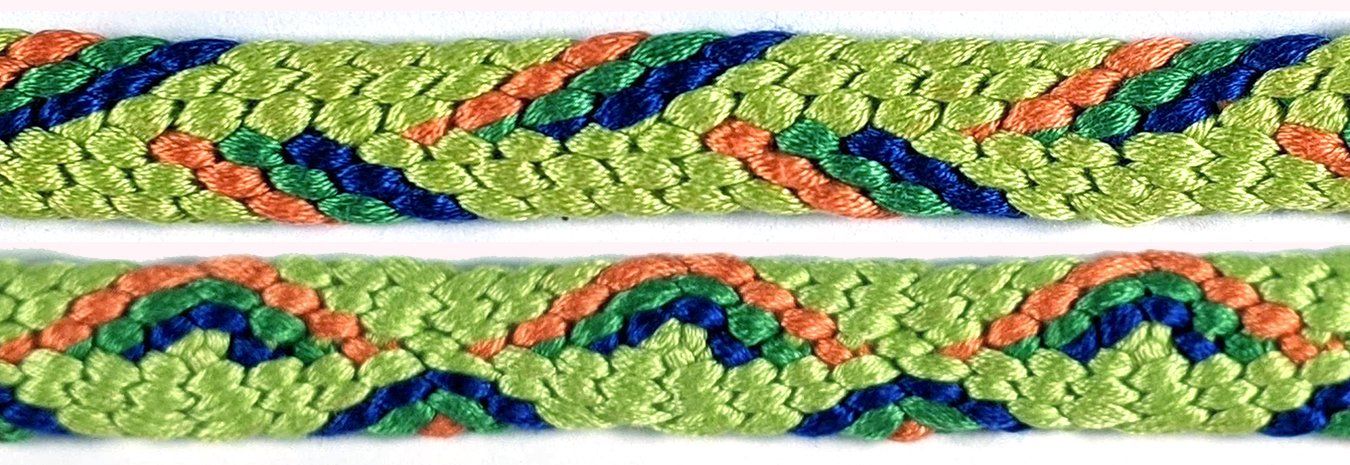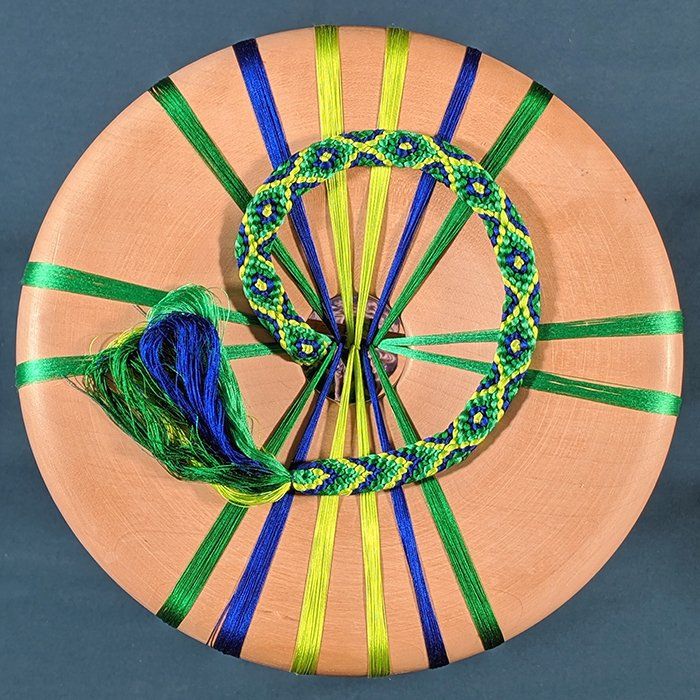Marudai Braids
Additional content coming soon! From simple and rhythmic to complex with many steps, marudai braids have many traditional and contemporary uses. See a preview of my video, Beginning Braiding on the Marudai available at Taproot.com.
Some of the braids from both the Japanese and Andean traditions made on the marudai for the video. (More samples were made after this photo was taken.) Each design has several variations.
This selection is made from cottons, wools, and silks of various kinds. Each fiber has its own character and effects the braids appearance in its own way. For an in-depth look at fibers for braiding, I wrote a detailed chapter in Andean Sling Braids - New Designs for Textile Artists. Owning a yarn shop, and doing some spinning, taught me a lot about fibers. The more you understand the fibers and the construction of your yarn/thread, the better you can choose which yarns to use in particular braid applications.
Above left: It took many skilled craftsman to design and construct this Japanese suit of armor. Hundreds of individual plates were laced together using narrow silk flat braids that were made on the the takadai. (Earlier examples would have been made by a loop method.) Marudai braids were used to fasten the back plate. The opulent knotted and tasseled braid appears to be a hollow braid worked over a core.
Above right: Samples of Design 2D from the video show how color arrangement changes the pattern in the braids called Sasanami (meaning ripples or little waves) and Karakumi (a diamond pattern that looks similar to those made on a Karakumidai.) These are 16-strand variations on the classic 24-strand braids. The top two samples are made in Lily 6-strand embroidery floss (collected in the early 1980s). The sample on the marudai uses 1 rope of kumihimo silk per bobbin. There are 42 ends of very fine silk thread per rope. (See the video or Andean Sling Braids for more information. Different suppliers of kumihimo fibers may have slightly different numbers of threads per rope.)






